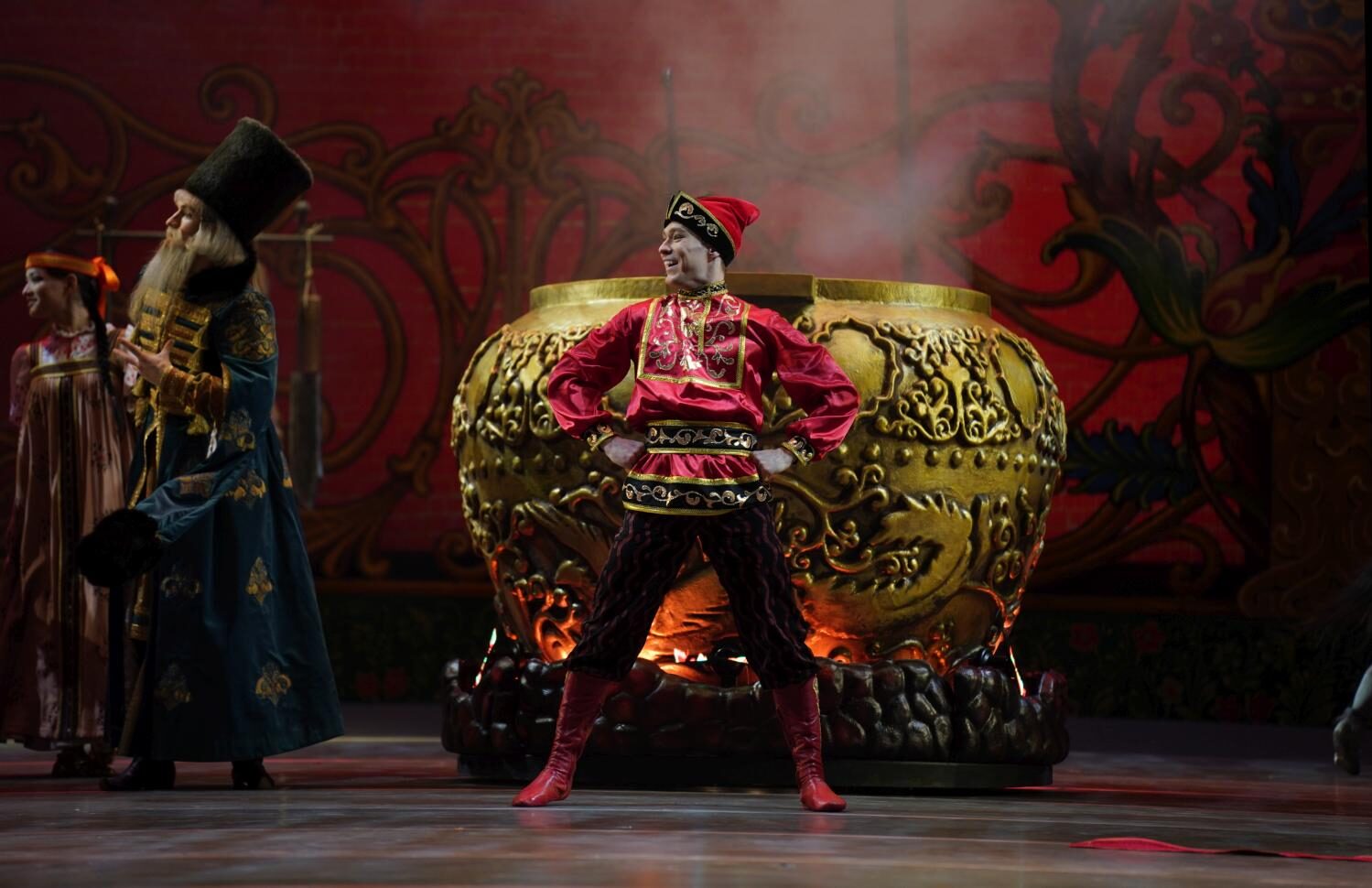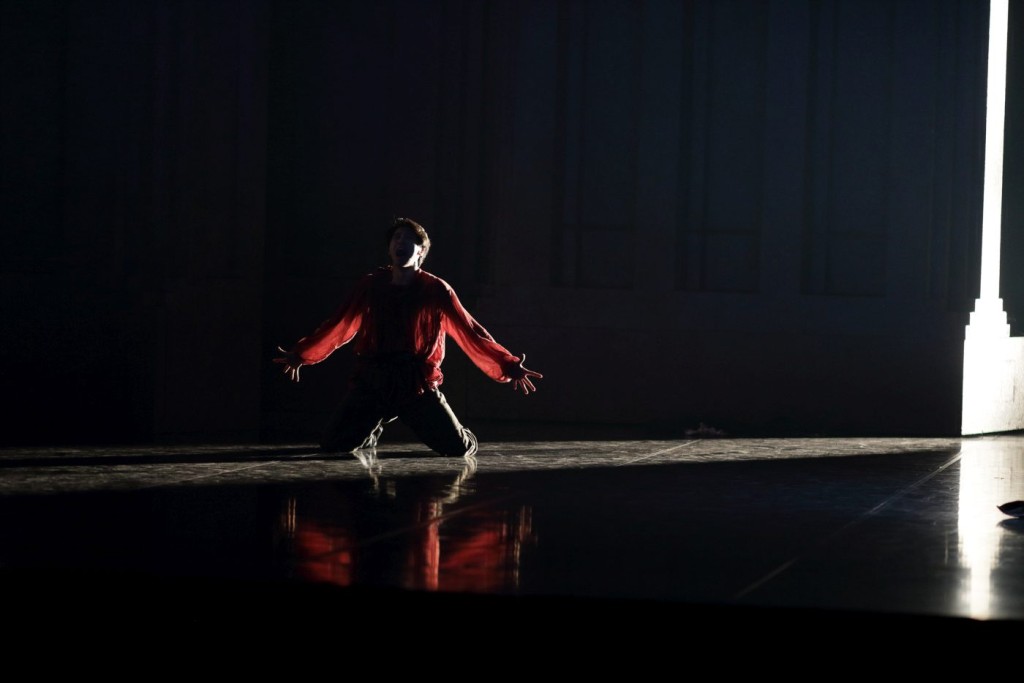“All We Love About Shakespeare” (“Ophelia, Madness and Death”, “Fatal”, “Romeo and Juliet”)
Ballet de l’Opéra national du Rhin
Opéra Strasbourg
Strasbourg, France
January 09, 2016
by Ilona Landgraf
Copyright © 2016 by Ilona Landgraf
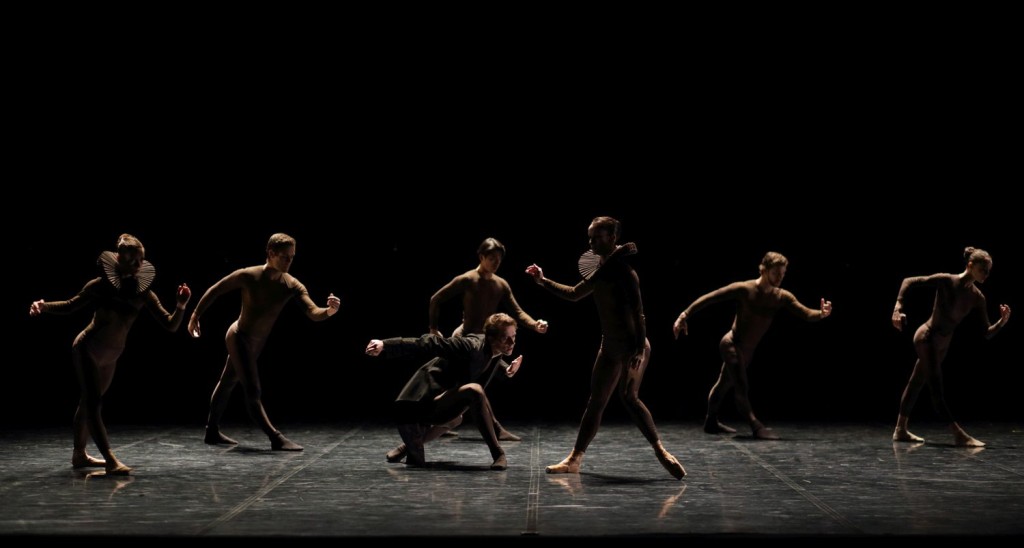 The Ballet de l’Opéra national du Rhin has advantageous conditions in order to prosper. The company is the dance hub of beautiful Alsace, a region much frequented by tourists. It has three venues: Strasbourg’s Opéra, La Filature in Mulhouse and the Théâtre municipal in Colmar. Ballet connoisseurs from Stuttgart or Zurich might come across the Rhine for a visit as well. Quite likely they get served interesting and innovative art, especially as the company was gifted with a National Choreography Center in 1985, the only one of in a total of nineteen being hosted by an opera house.
The Ballet de l’Opéra national du Rhin has advantageous conditions in order to prosper. The company is the dance hub of beautiful Alsace, a region much frequented by tourists. It has three venues: Strasbourg’s Opéra, La Filature in Mulhouse and the Théâtre municipal in Colmar. Ballet connoisseurs from Stuttgart or Zurich might come across the Rhine for a visit as well. Quite likely they get served interesting and innovative art, especially as the company was gifted with a National Choreography Center in 1985, the only one of in a total of nineteen being hosted by an opera house.
Ivan Cavallari, since 2013 the company’s artistic director, has close connections to Stuttgart. After his engagement as a dancer with the Ballet company of Teatro alla Scala, the Italian opera, in 1986, he joined Stuttgart Ballet. Later, he was at the helm of West Australian Ballet before returning to more native European soil.
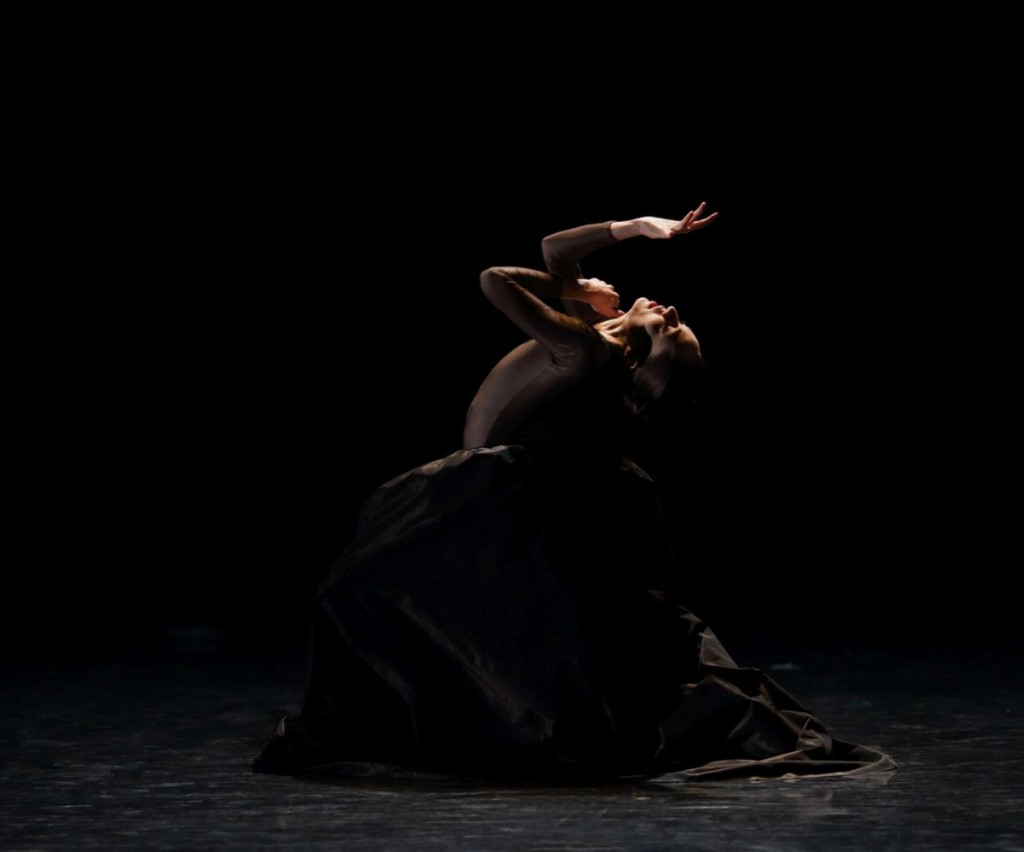 The Ballet du Rhin, founded in 1972, was first directed by Jean Babilée. Initially the focus was on classical dance, but over the years the repertory also encompassed contemporary pieces. Three of Cavallari’s own choreographies “Pinocchio”, “Nutcracker” and the abstract “Dolly” are in the Alsatian’s repertory. Being thoroughly familiar with Cranko’s heritage from his Stuttgart time, Cavallari has staged Cranko’s ballets for numerous companies but not for his own. In a telephone conversation in early January he explained that because of the proximity to Stuttgart, the Ballet du Rhin aims to offer a different program. Having had a very positive conversation, I was surprised about the rumors, which occurred only a few days later, saying Cavallari’s contract won’t be extended. Whether there is any truth to this and who made the decision will come out in the following weeks.
The Ballet du Rhin, founded in 1972, was first directed by Jean Babilée. Initially the focus was on classical dance, but over the years the repertory also encompassed contemporary pieces. Three of Cavallari’s own choreographies “Pinocchio”, “Nutcracker” and the abstract “Dolly” are in the Alsatian’s repertory. Being thoroughly familiar with Cranko’s heritage from his Stuttgart time, Cavallari has staged Cranko’s ballets for numerous companies but not for his own. In a telephone conversation in early January he explained that because of the proximity to Stuttgart, the Ballet du Rhin aims to offer a different program. Having had a very positive conversation, I was surprised about the rumors, which occurred only a few days later, saying Cavallari’s contract won’t be extended. Whether there is any truth to this and who made the decision will come out in the following weeks.
The company, which currently consists of thirty-three dancers of various nationalities, runs three dance programs per season plus some extra events. I saw a matinee of “All We Love About Shakespeare”, a triple bill comprising two new short ballets by Douglas Lee and Rui Lopes Graça in the first half and a condensed revival of Bertrand d’At’s “Romeo and Juliet” after the break.
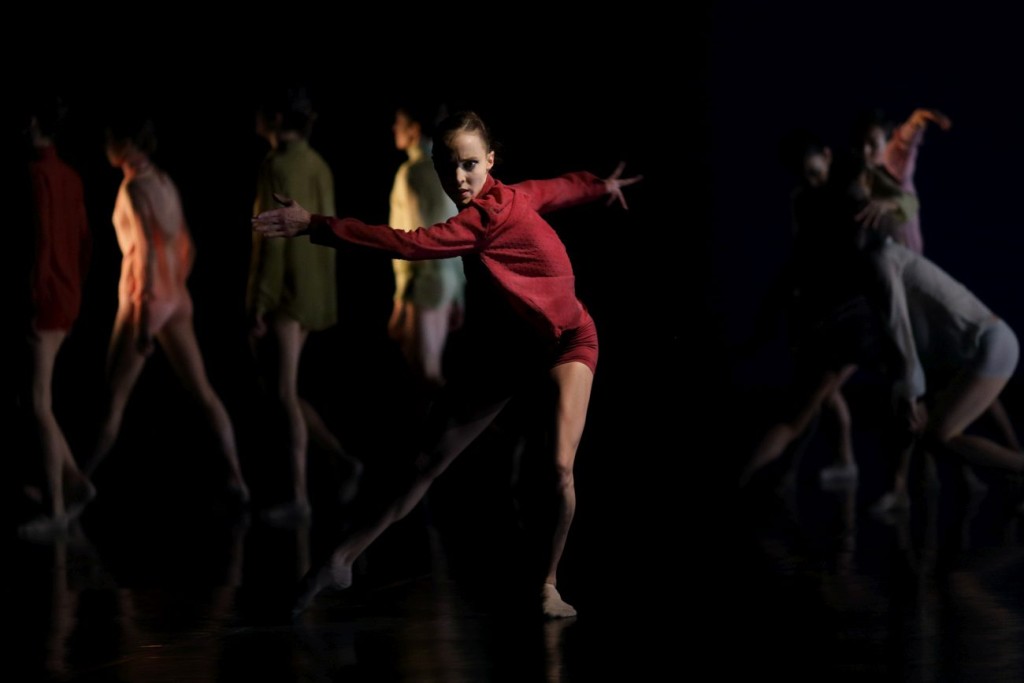 Lee contributed “Ophelia, Madness and Death”, contemporary choreography for three women and four men. Appropriately to the topic of the piece the atmosphere was gloomy. Movable fluorescent tubes provided very sparse lighting. All costumes were dark and close fitting except for that of one woman in a bulky crinoline open on the front. Ruff collars later taken off hinted at the historical background.
Lee contributed “Ophelia, Madness and Death”, contemporary choreography for three women and four men. Appropriately to the topic of the piece the atmosphere was gloomy. Movable fluorescent tubes provided very sparse lighting. All costumes were dark and close fitting except for that of one woman in a bulky crinoline open on the front. Ruff collars later taken off hinted at the historical background.
The music by Henry Purcell, Frank Henne and David Lang included fluent violin passages, plaintive and high-pitched female singing with thin voices and loud breathing sounds. Microphones were arrayed in a semicircle at the back of the stage. They marked positions for the dancers to stand at, reminding one of court attendants motionlessly watching what is going on. Sometimes one ballerina whispered into her microphone but her words weren’t clearly audible. Without reading the comment on the piece in the 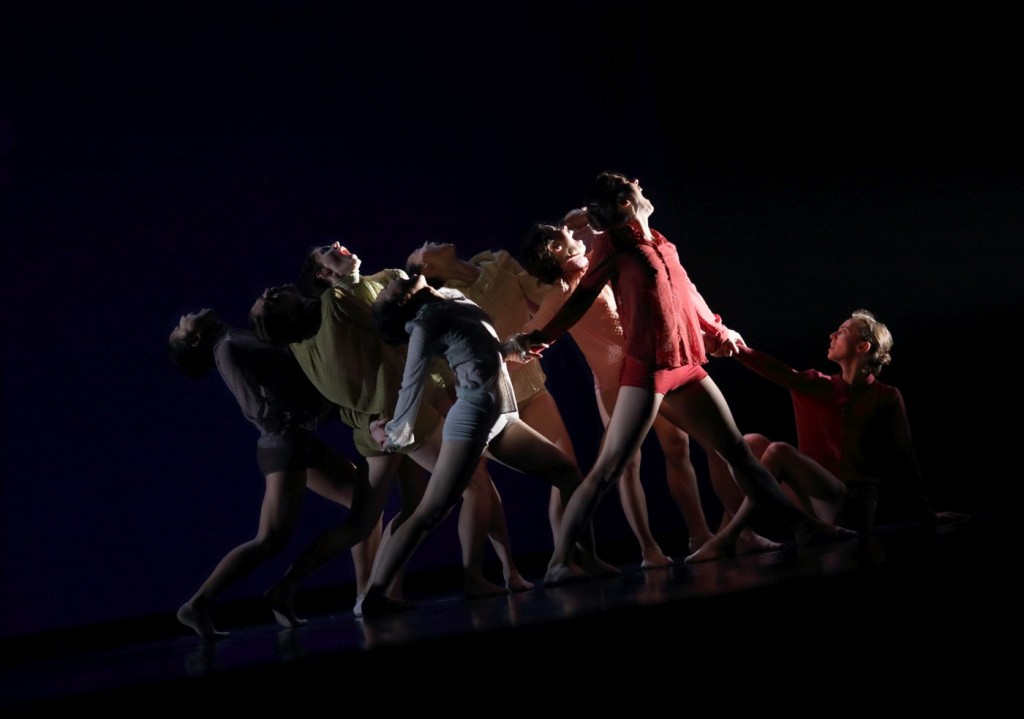 program booklet, a connection to Shakespeare’s “Hamlet” wouldn’t have been apparent either. The three women are meant to represent the shattered character of Ophelia, her being torn between sanity and madness. The woman with the crinoline walked crouched, carrying a tied bundle of brushwood. Lee altered fluent dance passages with successions of phrases reminiscent of robots. Torsos and arms twisted snake-like, the bodies posed and moved in (deliberately?) unbecoming ways. The evening was announced as one of “light entertainment and emotion”. Well, at least the latter was true.
program booklet, a connection to Shakespeare’s “Hamlet” wouldn’t have been apparent either. The three women are meant to represent the shattered character of Ophelia, her being torn between sanity and madness. The woman with the crinoline walked crouched, carrying a tied bundle of brushwood. Lee altered fluent dance passages with successions of phrases reminiscent of robots. Torsos and arms twisted snake-like, the bodies posed and moved in (deliberately?) unbecoming ways. The evening was announced as one of “light entertainment and emotion”. Well, at least the latter was true.
The second piece, Lopes Graça’s “Fatal”, seemed brighter on first sight. The Portuguese choreographer employs an all female cast of ten. Light green, red, yellow and rose hues of the women’s long-sleeved blouses and shorts made them look like pleasant-natured characters. The lighting evoked a peaceful fall evening. Golden stripes of light and dark shadows altered with dim nighttime. At the beginning the women lined up at the front stage. But suddenly the one on the left fell down and lay face down on the floor as if sleeping. Or was she dead? This was repeated again and again within the following 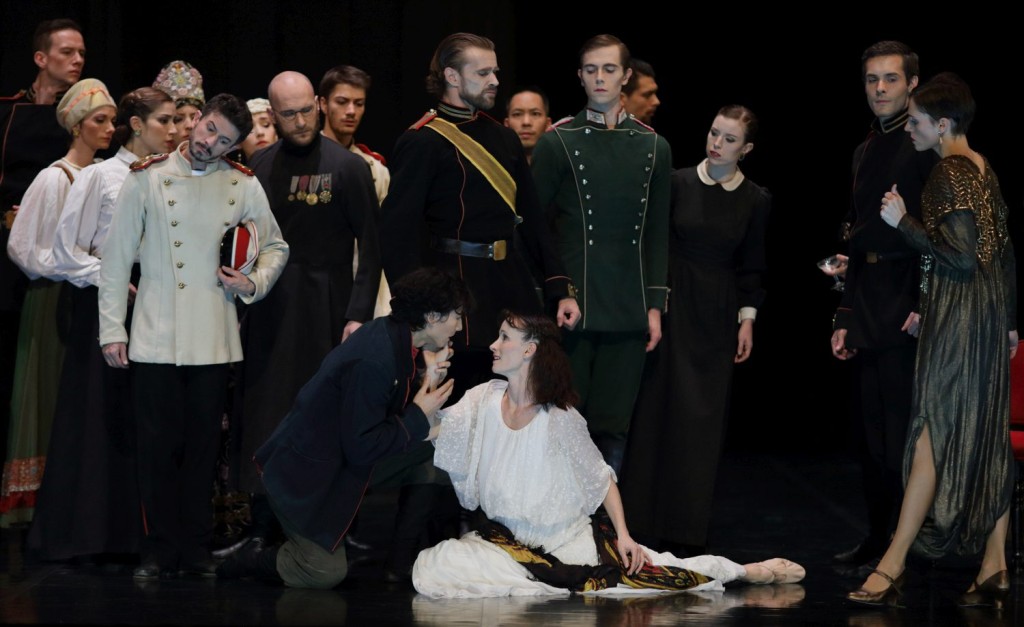 twenty minutes. Sometimes a woman abruptly collapsed, sometimes one slowly lay down as if about to sleep. Each of them came back on her feet again and sometimes immediately joined a group of dancers before the next sank down. At one point even four rested on the floor.
twenty minutes. Sometimes a woman abruptly collapsed, sometimes one slowly lay down as if about to sleep. Each of them came back on her feet again and sometimes immediately joined a group of dancers before the next sank down. At one point even four rested on the floor.
Lopes Garça scores with varying groupings and an interesting spatial use of the stage. Solos alternated with pas de deux or pas de trois. A few times the women ran together and formed a gesticulating bunch. Their wide-open mouths indicated silent screams. Something terrible must be going on. But what? Also the music, Franz Schubert’s “La Jeune fille et la mort” gave one a sense of foreboding. Also here a look in the program booklet helped to reveal that Lopes Graça had drawn his inspiration from the three witches in “Macbeth” and also from paintings by the German Hans Baldung Grien (1484/85 – 1545). Baldung Grien, who later moved to Strasbourg, painted lots of pictures showing witches.
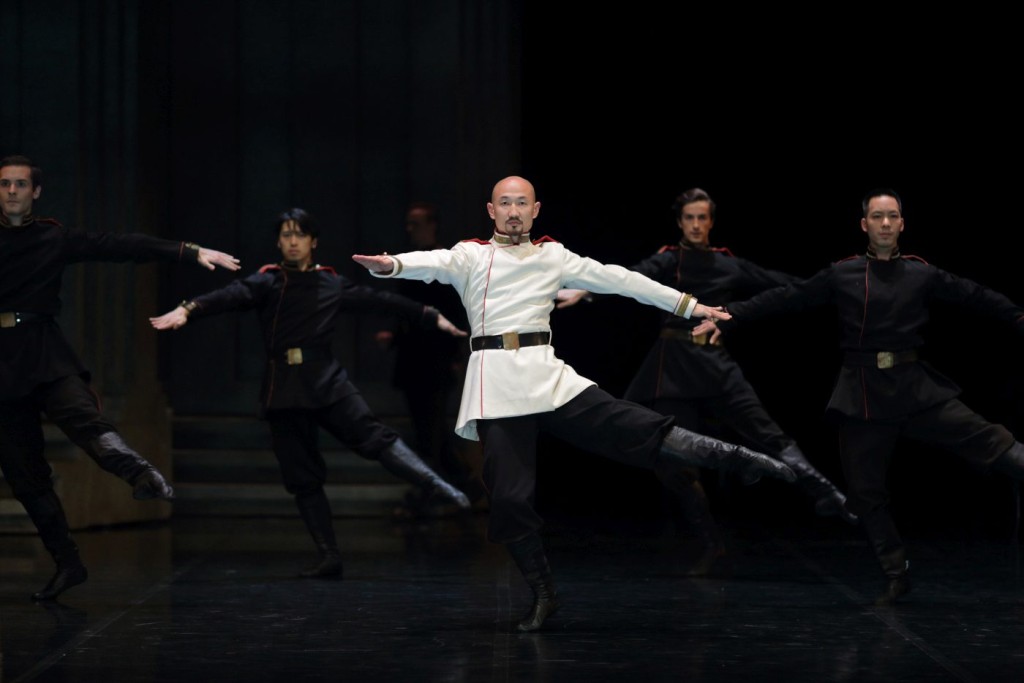 Lopes Graça’s intention was to explore why innocent women become demonic. What turns the balance from being good to being evil? Broken dreams? Disillusionment? Or is it merely a mishap? “Fatal” ended with the violins speeding up. All dancers ran off stage except for one sleeping on the floor. She woke up and, completely startled, gazed into the audience. I guess not many could have explained to her offhand how “Fatal” connected to Shakespeare.
Lopes Graça’s intention was to explore why innocent women become demonic. What turns the balance from being good to being evil? Broken dreams? Disillusionment? Or is it merely a mishap? “Fatal” ended with the violins speeding up. All dancers ran off stage except for one sleeping on the floor. She woke up and, completely startled, gazed into the audience. I guess not many could have explained to her offhand how “Fatal” connected to Shakespeare.
The first tunes of Prokofiev’s “Romeo and Juliet” brought us back on familiar ground. The troupe danced a version by d’At, its artistic director from 1997 to 2012, which was condensed by around one hour to complement the triple bill. Now eighty minutes long there was still enough time for the love story’s core scenes to develop. Only they were strung together without much transition. D’At’s interpretation doesn’t play in lovely Verona but in Kiev during the October Revolution in the late 1910s, the time the young Prokofiev had witnessed before immigrating to the United States.
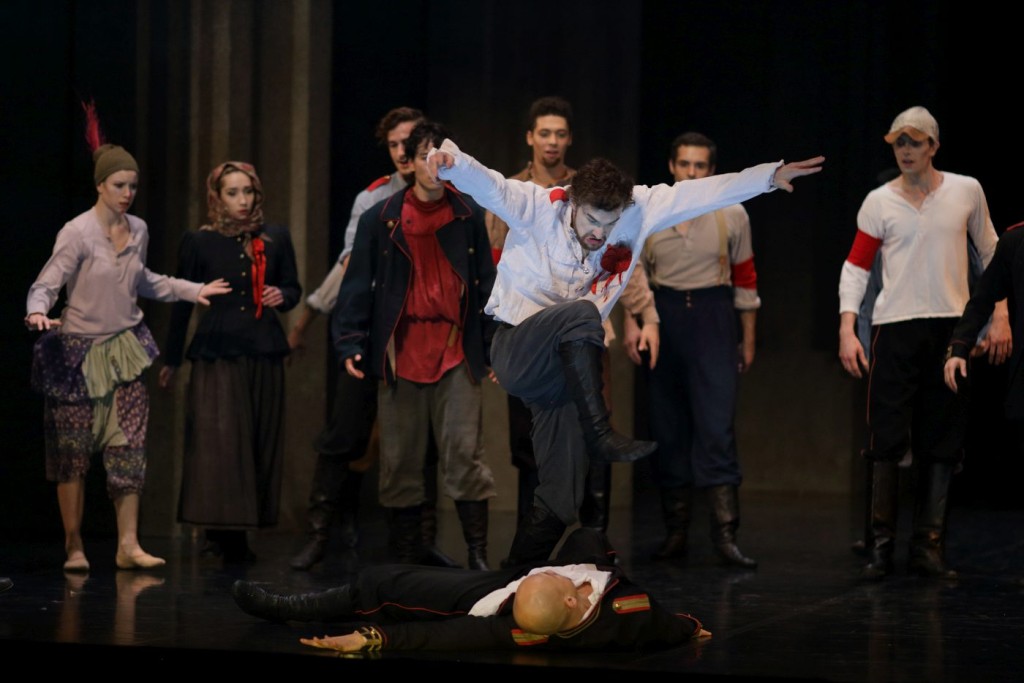 Juliet is a young aristocrat, Romeo a Bolshevik revolutionary. Hence the fights on the market place are strongly fueled by the underlying civil war. Ruby Sabounghi’s costumes evoke the spirit of the time. Women wore traditional dresses and long headscarves; the male aristocrats had uniforms, the revolutionaries simple, partly shabby clothes. Only one girl performing the Dance with the Lilies was en pointe. The set, also by Sabounghi, consists of several huge wall elements, which were moved by the dancers for scene changes. The walls formed the interior at the Capulet’s ball, the broad columns in the church where the wedding takes place, the house walls surrounding the market place and the walls of Juliet’s tomb.
Juliet is a young aristocrat, Romeo a Bolshevik revolutionary. Hence the fights on the market place are strongly fueled by the underlying civil war. Ruby Sabounghi’s costumes evoke the spirit of the time. Women wore traditional dresses and long headscarves; the male aristocrats had uniforms, the revolutionaries simple, partly shabby clothes. Only one girl performing the Dance with the Lilies was en pointe. The set, also by Sabounghi, consists of several huge wall elements, which were moved by the dancers for scene changes. The walls formed the interior at the Capulet’s ball, the broad columns in the church where the wedding takes place, the house walls surrounding the market place and the walls of Juliet’s tomb.
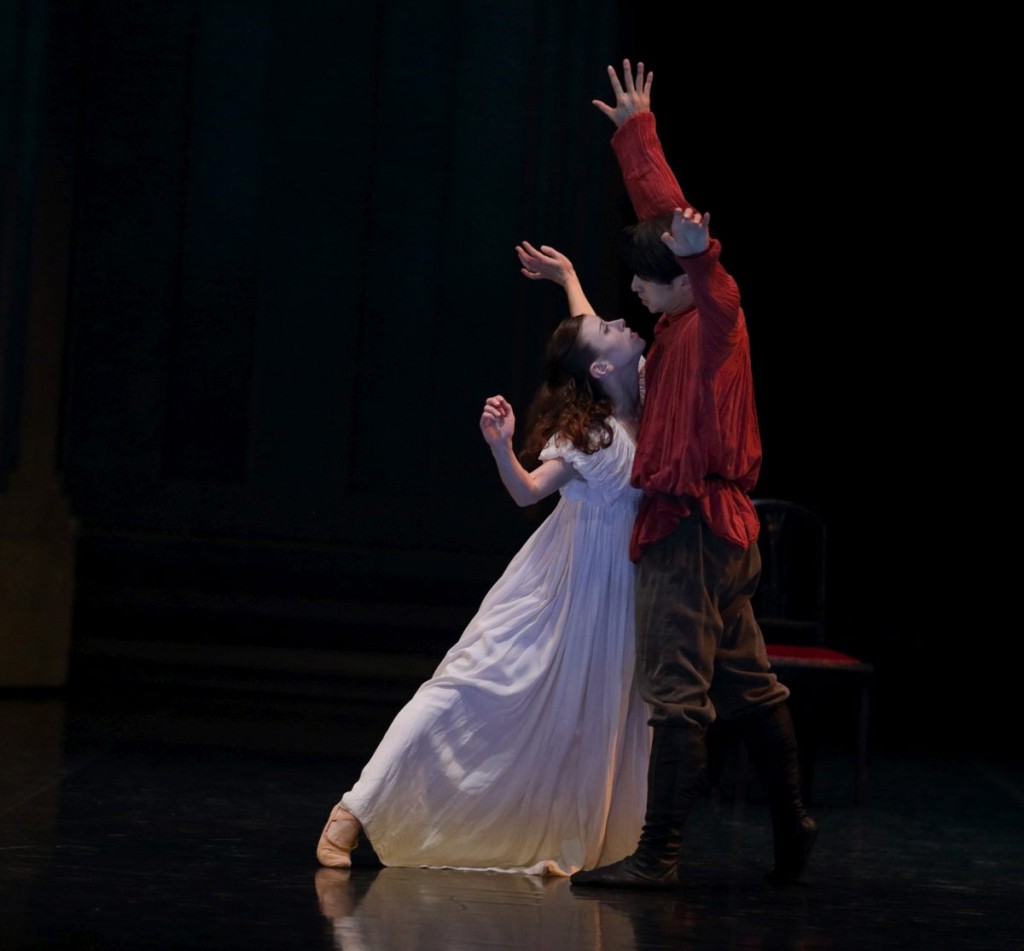 D’At’s way of storytelling is sometimes blatant, emotions rarely had time to arise from within. Instead they were squashed under hectic actions or, as in Juliet’s solo before taking the poison, expressed in little significant movements. The balcony scene, which here took place in the empty ballroom, became, for example, an impetuous affair with chairs being pushed down and much running back and forth. Juliet (Stéphanie Madec-Van Hoorde) hardly had lain on the floor when rushing up again and swirling around the neck of Romeo (Hamilton Nieh) or running to another corner of the room. The two lovers seemed more engaged in wrestling at times than in a romantic tête à tête. Totally overwhelmed by the parting kisses Romeo tottered extensively.
Juliet’s bold nature also became apparent when she was refusing Count Paris (Marwik Schmitt). She punched the poor guy in the stomach.
D’At’s way of storytelling is sometimes blatant, emotions rarely had time to arise from within. Instead they were squashed under hectic actions or, as in Juliet’s solo before taking the poison, expressed in little significant movements. The balcony scene, which here took place in the empty ballroom, became, for example, an impetuous affair with chairs being pushed down and much running back and forth. Juliet (Stéphanie Madec-Van Hoorde) hardly had lain on the floor when rushing up again and swirling around the neck of Romeo (Hamilton Nieh) or running to another corner of the room. The two lovers seemed more engaged in wrestling at times than in a romantic tête à tête. Totally overwhelmed by the parting kisses Romeo tottered extensively.
Juliet’s bold nature also became apparent when she was refusing Count Paris (Marwik Schmitt). She punched the poor guy in the stomach.
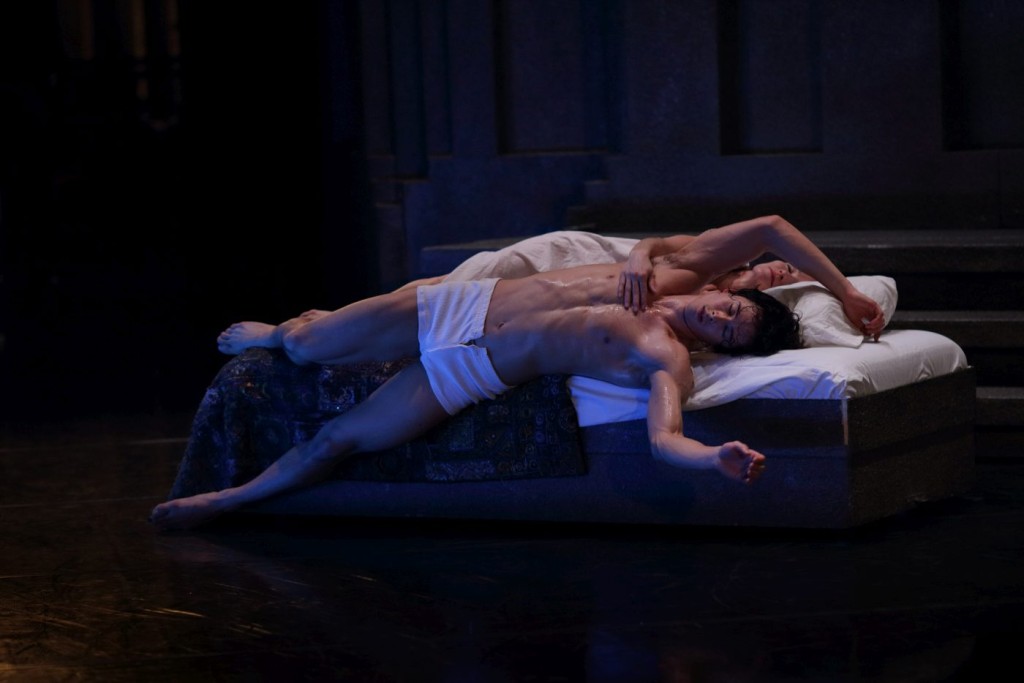 Intense and fierce fights – not with swords but with fists and a whip – ended with Mercutio (Jean-Philippe Rivière) being shot dead and Tybalt (Miao Zong), who had spun and leaped with arrogant confidence at the ball, being stabbed by accident.
Intense and fierce fights – not with swords but with fists and a whip – ended with Mercutio (Jean-Philippe Rivière) being shot dead and Tybalt (Miao Zong), who had spun and leaped with arrogant confidence at the ball, being stabbed by accident.
A poison pill killed Romeo at the end. Juliet shot herself. The revolution came back to mind with a group of revolutionaries mournfully passing by the dead lovers. One man took off Romeo’s ammunition belt – further fights were certain.
At the conductor’s podium of the Symphonic Orchestra of Mulhouse was Wolfgang Heinz. He had all my sympathy when during the Dance of the Girls with the Lilies, a recorded passage, the CD player didn’t run smoothly. Totally undaunted, Anna Ishii accomplished her solo flawlessly. Heinz applauded her enthusiastically.
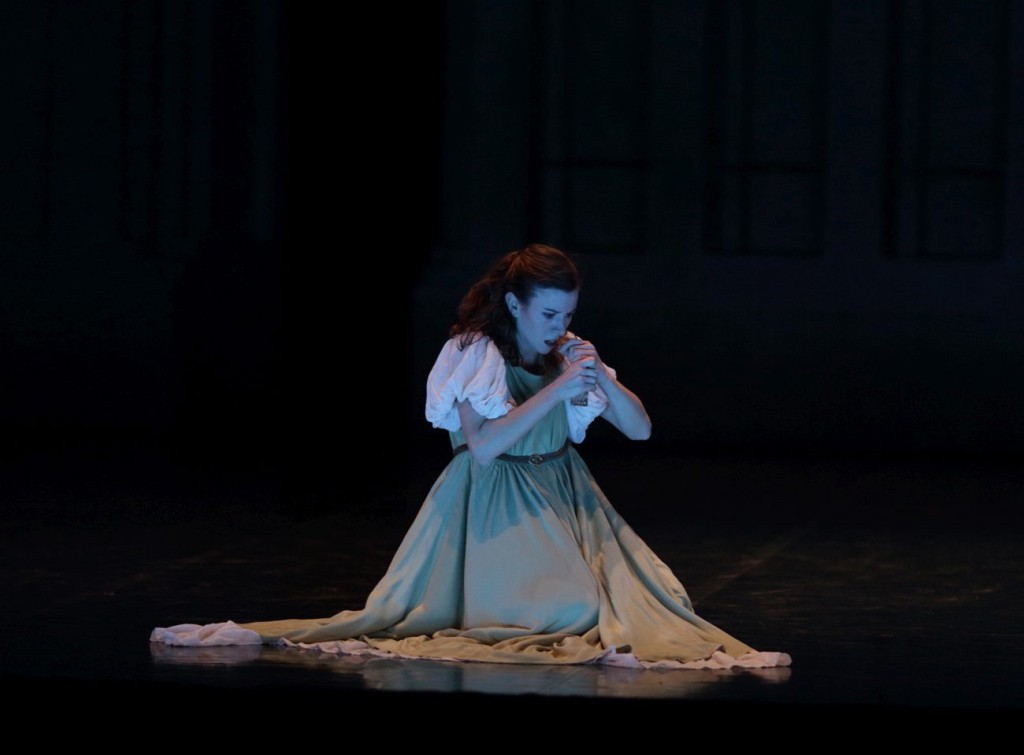 The matinee performance hadn’t sold very well. To fill the seats school classes had been invited. But was this program appropriate for young kids? Why, moreover, didn’t the audience flock to the opera to see a new dance evening? Is there a connection to the terror attacks last November in Paris? Since then security measures have been tightened in France. A group of policemen immediately entered the TGV at Strasbourg’s central station to screen suspicious looking travelers. At the opera’s entrance security guards controlled each bag. One wasn’t allowed to take beverages and larger bags into the house. This inevitably harms the atmosphere and maybe people’s readiness to participate in the cultural life at all. Yet to what extent?
The matinee performance hadn’t sold very well. To fill the seats school classes had been invited. But was this program appropriate for young kids? Why, moreover, didn’t the audience flock to the opera to see a new dance evening? Is there a connection to the terror attacks last November in Paris? Since then security measures have been tightened in France. A group of policemen immediately entered the TGV at Strasbourg’s central station to screen suspicious looking travelers. At the opera’s entrance security guards controlled each bag. One wasn’t allowed to take beverages and larger bags into the house. This inevitably harms the atmosphere and maybe people’s readiness to participate in the cultural life at all. Yet to what extent?
German opera houses and theaters haven’t instituted security checks. At least not up to now. Usually the houses are buzzing with life and excitement. How long can this be maintained? And what about freedom of artistic expression if it is only possible under protection?
| Links: | Homepage of the Ballet de l’Opéra national du Rhin | |
| Photos: | (The photos show a partially different cast from an earlier performance.) | |
| “Ophelia, Madness and Death” (Douglas Lee) | ||
| 1. | Ensemble, “Ophelia, Madness and Death” by Douglas Lee, Ballet de l’Opéra national du Rhin 2016 | |
| 2. | Susie Buisson, “Ophelia, Madness and Death” by Douglas Lee, Ballet de l’Opéra national du Rhin 2016 | |
| “Fatal” (Rui Lopes Graça) | ||
| 3. | Susie Buisson and ensemble, “Fatal” by Rui Lopes Graça, Ballet de l’Opéra national du Rhin 2016 | |
| 4. | Ensemble, “Fatal” by Rui Lopes Graça, Ballet de l’Opéra national du Rhin 2016 | |
| “Romeo and Juliet” (Bertrand d’At) | ||
| 5. | Hamilton Nieh (Romeo), Stéphanie Madec-Van Hoorde (Juliet) and ensemble, “Romeo and Juliet” by Bertrand d’At, Ballet de l’Opéra national du Rhin 2016 | |
| 6. | Miao Zong (Tybalt) and ensemble, “Romeo and Juliet” by Bertrand d’At, Ballet de l’Opéra national du Rhin 2016 | |
| 7. | Jean-Philippe Rivière (Mercutio), Miao Zong (Tybalt) and ensemble, “Romeo and Juliet” by Bertrand d’At, Ballet de l’Opéra national du Rhin 2016 | |
| 8. | Sandra Ehrensperger (Juliet) and Renjie Ma (Romeo), “Romeo and Juliet” by Bertrand d’At, Ballet de l’Opéra national du Rhin 2016 | |
| 9. | Hamilton Nieh (Romeo) and Stéphanie Madec-Van Hoorde (Juliet), “Romeo and Juliet” by Bertrand d’At, Ballet de l’Opéra national du Rhin 2016 | |
| 10. | Sandra Ehrensperger (Juliet), “Romeo and Juliet” by Bertrand d’At, Ballet de l’Opéra national du Rhin 2016 | |
| 11. | Renjie Ma (Romeo), “Romeo and Juliet” by Bertrand d’At, Ballet de l’Opéra national du Rhin 2016 | |
| all photos © Jean-Luc Tanghe 2016 | ||
| Editing: | Agnes Farkas |
